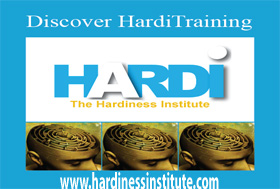
Have you ever walked away from somebody and thought, what a jerk! Or maybe you’ve had the reaction, what a nut job! These are both common and fairly young responses to bad moments with others. Perhaps you’re a little more open minded and have walked away wondering, what got me so angry with that guy? Or maybe, why did I get so nervous around that woman? These are more helpful questions to ask after a disturbing run-in. These questions are constructive since they invite us to be curious about ourselves. These questions open us up to getting to know ourselves. This is narrative formation, or what is more casually called story telling.
Did you know that psychologists can predict your attachment style before you’re born? You’re probably thinking that this sounds crazy. However, research shows that your attachment style can be predicted while you’re still in your mother’s womb, with about 75% accuracy. This is because of the power of story. The state of your story is so powerful, that you’re likely to keep the same attachment style throughout your life, unless you have a major intervening event that changes your story.
Not many of us know our own story. Now I know what many of you are thinking. I know when I was born. I know who my parents and siblings are. I know where I grew up. None of these data points are about the story that I’m talking about. By story, I mean the narrative of how we’ve been impacted by those most important to us. I mean the remnant of the kind of person we’ve become, and who has left fingerprints on our lives. From an Attachment Theory perspective, we become largely the product of our most significant relationships. To have a secure attachment, the ultimate goal of Attachment Theory, means to have someone in your life that has your back emotionally. This doesn’t mean this person puts food in your stomach, clothes on your back, and a roof over your head. It doesn’t even mean a buddy who will back you up in a bar fight. Of course, all of these are essential. Rather, a securely attached person keeps track of you in their mind. This person is responsive to you when you’re in trouble, and notices when you’re distressed. By being attuned to the person that you’re securely attached to, you can tell when they are upset, and securely attached people want to respond to those they have this kind of connection with. If you’re trying to figure out who you’re securely attached to, think about the person that brings out the best version of you. That is who you are most likely securely attached with, if anyone.
So knowing our story has less to do with where we were born, and more to do with the type of person birthed. Some of us learn to avoid having any needs, since we’ve found that no one wants to hear about them. Some of us learn to never cry, as that is seen as weak or childish. And others might rarely be openly angry, having found that important people respond badly. And most sadly, some experience that no one is interested in anything about them.
In Restoring a Life, I tell the story of a young adolescent boy named Thomas, who grows up with people that don’t have much interest in his emotional life, resulting in depression. I give him a mentor who understands the value of story, and helps Thomas to come to life emotionally. This mentor provides Thomas with the first secure attachment he’s ever known. Not only does this change the course of his life, but it gives him a blueprint for how to find good relationships. Thomas develops a new lens through which to look for good friends and a lady. This securely attached mentor gives Thomas new story.
Attachment Theory also suggests that most of us learn to manage our emotions in one of a couple of coping styles. One strategy is to dismiss most of our feelings, or at least the emotions related to being attached to someone important. Dismissives tend to feel little, and live as though they don’t need others. Those partnered with a dismissive often complain of not feeling loved or wanted, and wonder why their partners don’t want to be with them more, or open up to them.
The second style is to become preoccupied with attachment needs. The preoccupied person often feels overwhelmed with emotion and unable to get their arms around their feelings. They tend to live lives of emotional over-arousal, going from crisis to crisis. The preoccupied’s partners sometimes experience their significant other as needy, and unable to get enough. Many preoccupieds live in constant fear of their partners being unfaithful, or perhaps see their partners as looking for other opportunities, even when they aren’t.
Both of these styles can be particularly challenging in the realm of romantic relationships. In Of Relationships & Storms, I tell the story of two couples attempting to navigate the difficult task of making a romantic partnership work. In this story I demonstrate the importance of coming to know your own life narrative, as well as the tragic results of not doing so. One of the main characters, Kathy, gets help coming to know her story, which has a life changing impact. Kathy finds people in a therapy group who can help her get to know herself and her narrative. These people help Kathy to develop new story.
All we need to develop our narrative is a willingness to be curious about ourselves, and a wise person to put their arm around our shoulder and be curious about us as well. This could be a psychotherapist, a mentor, a parent, or a wise old soul that knows how to reflect on personal story.
I hope my post today gave you a good way to begin to think about your life. If you’re curious about either of the two storytelling novels that I mention in today’s article you can find them by clicking on the links that follow (Restoring a Life and Of Relationships and Storms).
Let me know if you liked today’s post by selecting the Like icon that follows. You can also Tweet or Google+1 this article to let your friends know about it. Best regards, Mark MacMillin





